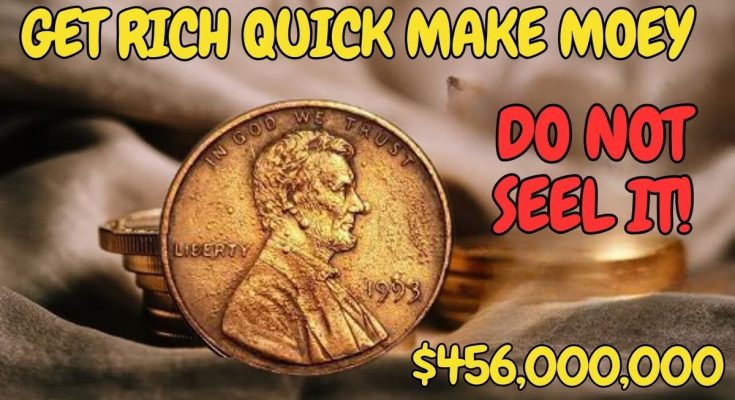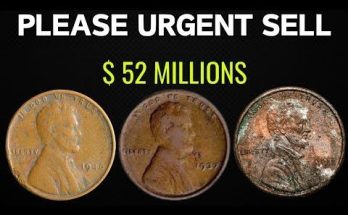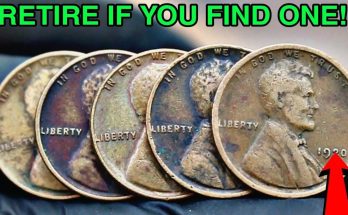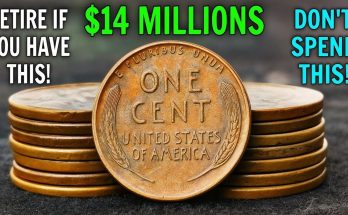RARE SUPER MOST VALUABLE LINCOLN PENNIES WORTH A LOT OF MONEY!
The familiar copper-brown coin with the profile of Abraham Lincoln is perhaps the most common piece of currency in American pockets. We often see them as little more than a nuisance, dropped into jars or tossed aside without a second thought. But for a select group of enthusiasts and lucky finders, the Lincoln penny is far from worthless. It is a treasure map, a historical artifact, and a potential fortune waiting to be discovered. The photo and caption, “RARE SUPER MOST VALUABLE LINCOLN PENNIES WORTH A LOT OF MONEY!,” hint at a secret world of numismatics where a single cent can be worth more than a house.
The story of the Lincoln penny’s immense value begins with its very first year of mintage in 1909. Designed by Victor David Brenner to commemorate the 100th anniversary of Lincoln’s birth, the coin was revolutionary for being the first U.S. circulating coin to feature a real person. Brenner initially included his initials “V.D.B.” on the reverse, a detail that quickly sparked controversy and led to their removal. However, a small number of pennies had already been struck at the San Francisco Mint with the initials, creating the legendary 1909-S VDB. With a mintage of only 484,000, it became an instant collector’s item and remains one of the most sought-after coins, with a value that can reach into the thousands of dollars, depending on its condition.
But the most famous and compelling stories of the valuable Lincoln penny are often born from mistakes. During the height of World War II, in 1943, the U.S. Mint was ordered to conserve copper for the war effort. The composition of the penny was changed from a copper alloy to zinc-coated steel, a distinctively silver-colored coin that earned the nickname “steelie.” This policy was a crucial measure, but as in any large-scale operation, human error occurred. A handful of copper planchets—the blank metal discs used to strike the coins—were accidentally left in the presses and struck with the 1943 date. These “1943 copper pennies” are among the most famous error coins in existence. With only around 20 known examples, they are true rarities, with a single coin selling at auction for over $1 million.
The story doesn’t end there. The very next year, in 1944, the Mint returned to a copper-based alloy for the penny. And in a mirror-image error, a small number of leftover steel planchets from 1943 were mistakenly struck with the 1944 date. The 1944 steel penny is a less-known but equally valuable error, with examples commanding tens of thousands of dollars.
Beyond composition errors, valuable pennies are also identified by striking errors known as “doubled dies.” The most iconic example of this is the 1955 doubled die penny. A malfunction in the die-making process caused the coin’s design to be struck twice, creating a dramatic, unmistakable doubling of the letters in “LIBERTY,” “IN GOD WE TRUST,” and the date. While thousands were produced, they were quickly discovered and became an instant legend. Another, much rarer, example is the 1969-S doubled die, which is so scarce that a genuine example can be worth over six figures.
The secret to uncovering these treasures lies in a careful eye and a bit of knowledge. While the vast majority of pennies in circulation are worth exactly one cent, the potential for an extraordinary find is real. The hunt involves more than just a quick glance. It requires a meticulous examination of the date, the mint mark (a small letter like ‘S’ for San Francisco or ‘D’ for Denver), and the lettering and design for any signs of doubling or unusual characteristics. The value is not just in the money, but in the thrill of the chase and the connection to history. Each rare penny tells a unique story of a moment in time, a human error, or a manufacturing anomaly that made it a legend. So next time you see a jar of loose pennies, remember the stories of the 1943 copper and the 1955 doubled die. You might just be looking at the next great numismatic discovery.



